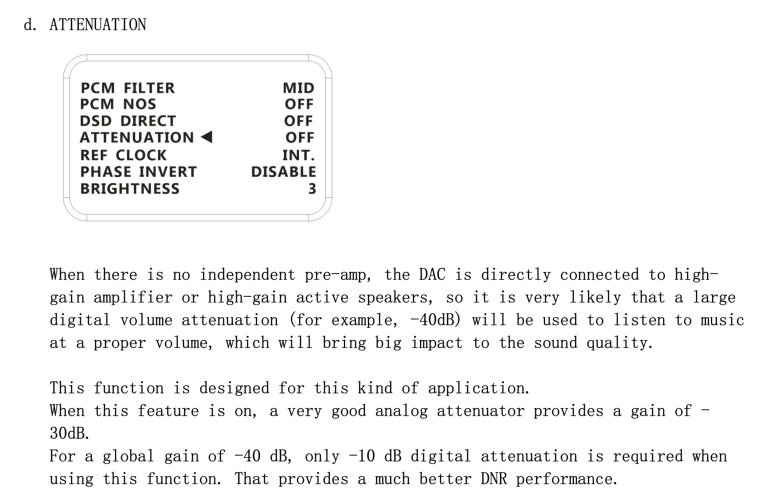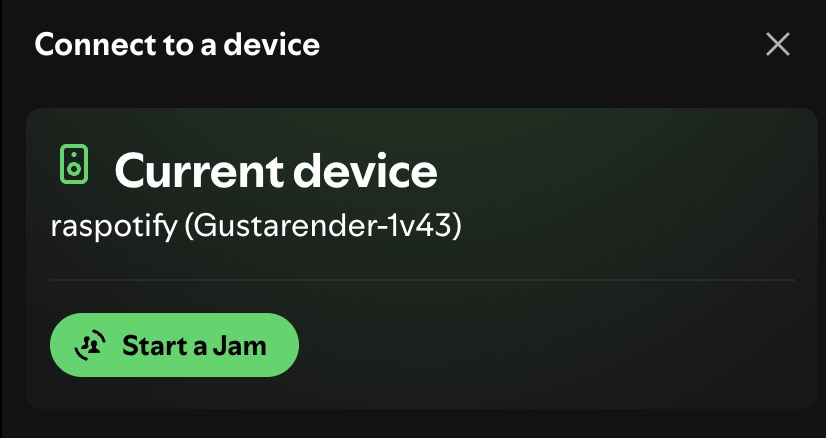Thank you for the response. I look forward to your further insights as well.
This is my chain:
MiniDSP SHD Studio (Running Roon + Dirac)-> SPDIF -> Hermes DDC -> i2S -> R26 ->Balanced - > Benchmark HPA4 -> Balanced -> 2x Monoblock Burson Timekeeper 3x GT (30W of Class A sold me) -> Dynaudio Heritage Special.
To answer your question. Yes. I use a Blue Jeans SPDIF cable to Hermes. Thought about trying AES (?), but the SPDIF seems to work well.
Mini DSP maxes out at 96khz, not sure if i am missing out on more resolution - that i would notice - but have this in a smaller office in which the Dirac is a lifesaver for my room modes. I can't see me pulling it out of the chain unless something more hi res comes out. I have lots of room treatment but still need need help on low end. I truley believe DSP is most underrated tweak (tied with room treatment) part of this hobby. A ton of time energy goes into how x amp sounds, etc....DSP users can have a level of control over these aspects without needing to turn as much gear to find thier nirvana. Anyway...i got on a tangent!
Let me know further thoughts on Master Clock. I am shopping for that extra 5% like the rest of us damaged souls. I agree with the previous poster that a 10K master clock is the way to go vs. getting to locked into Denafrips Word clock frequencies. There is part of me that just wants to buy Teminator II 12th and slave the hemres with clock cables and be done with it, but the R26 could be already in that league and possibly can I squeeze more with + decent 10K clock, and a few other tweaks - don't know.
Last- It kind of feels odd to pay more a master clock than my DAC though. I was looking at Afterdark G options.... prob thinking LHY/C18. It goes to show how much of a bargain the R26 is.
External clocks generally - agree with
@m-i-c-k-e-y that 10mhz is way more versatile in terms of compatibility. It’s the way I’ve gone and would advocate. But it’d be remiss not to mention the benefit of the Denafrips approach is the clock signal doesn’t need to be re-synthesised by the DAC or DDC to multiples of 44.1 or 48khz which introduces jitter. That said the Gustard K2 clock synthesiser is by all accounts excellent, keeping any additional jitter/phase noise to a minimum. There’s a couple of guys on the Master Clock thread with other Gustard *26 DACs (which share the K2 with the R26) with USD4-6k clocks which they seem super happy with. So the *26 DACs, incl the R26, can scale… a lot.
LHY clocks vs AfterDark, Cybershaft or Gustard’s C18 - with the latter three you get certainty re measured phase noise and pay accordingly for it, with the former you get the savings of LHY not having to invest in the equipment and time to do phase noise measurements of all units, but have to rely on user reports alone but still are at risk of unit-to-unit variation. For the record a single OCK-1 was measured by John Swenson of Uptone and found to be well below the claimed phase noise spec after which LHY chose to remove their claimed phase noise specs for all models, there’s been no independent phase noise measurements of an OCK-2 yet that I’m aware of. There were some plots of the square wave signals for the OCK-1 which were a bit messy, and some really clean sine and square plots for the OCK-2. There seems to be quite a bit of anecdotal evidence that low offset (1-10hz) phase noise alone isn’t the sole determinant of master clock sound quality as there’s some R26 users with Leo Bodnar GPS clocks (with phase noise specs a good 10db worse than that OCK-1 unit’s measured PN) that they rave about. Ditto re folk like me and others with the OCK-1 - for most of us it’s been a really satisfying lift in the R26’s sound, better dynamics, a calmer sound and expanded soundstage depth. For me the OCK-2, which I got after having the OCK-1 for 6 months when temptation/curiousity got the better of me, takes the resolution, refinement and dynamics up a couple of notches.
Re the OCK-2 user reviews there have been several folk with the Mutec Ref10 SE (a $6k clock) who were really impressed by the OCK-2, the Ref10 was still clearly better, but they found the performance the OCK-2 delivered at a sub $1k pricepoint which was previously unheard of. From memory there’s a guy with a standard Ref10 who prefers the OCK-2 and below is a chap who had the Gustard C18 as well - you can see which one he prefers. Long story short - you cannot go wrong with the OCK-2 as you’d have to spend a lot to better it.
I hear guys here asking about comparison between Gustard C18 and LHY OCK-2, I had both and now that I have sold my C18 I can voice out my opinion. I guess it is not hard to know that I prefer the OCK-2. I use Gustard U18 and X26 Pro, the OCK-2 performs better than C18 on my system. The soundstage is more open, more details and for a much cheaper price. I sold my C18 for a price higher than the brand new price of OCK-2, leaving some money for other upgrades.
OCK-2 vs SW10. A bit of a tough one. Alvin from Beatechnik indicated to another member over email that the SW10’s oscillator is better than the OCK-2. But then it only has one output which is a square wave. So with the SW10 you’re limited if in future you had more devices that take clock input. You could use a splitter like the one Cybershaft makes but they don’t guarantee it will work equally well for other brands’ gear, and it will still be solely square wave. I find the R26 performs better with the sine wave output of the OCK-1 and OCK-2, irrespective of cables used and I’ve tried a few. There’s a few possible reasons for this - the quality of the sine-square converter in the LHY clocks, or the quality/characteristics of the clock receiving circuit in the R26. Running from memory most R26 clock users prefer sine , so this point more than any other gave me pause with the SW10 which I was tempted by, as I have the SW8 so know how good their switches are. Oh and it’s far more expensive than the OCK-2 (you can get the latter for ~USD600 on AliX, whereas the SW10 is still only available from Beatechnik for USD1350. Otherwise the SW10 looks a beast with its inbuilt high quality switch, FMCs and clock. Ideal solution - get both it and the OCK-2, try both, keep the one you prefer and sell the other. The risk is you’ll like both and have to keep both!
Room equalisation, time alignment of DIRAC - I can empathise with your desire to retain these benefits. At present I do my critical AB listening in a near field position, takes most of the room acoustics out of play in my 6 x 7m room, as back in my usual listening position room acoustics obscure a fair bit of detail, especially soundstaging. In recent times I’ve been single-mindedly pursuing purity of the digital signal path which has been an eye-opener, then will look at equalisation - and crossovers for my sidelined subs - after this. I’ve not managed to insert the Flex Digital into the chain without it impacting the quality quite a bit vs the R26 LAN - but appreciate the SHD is a different beast. One suggestion is unless you’re also using the SHD’s digital crossover functionality you could explore the alternative of time alignment via convolution filters in Roon or HQP -
@camrector is the guru here. See his earlier posts. Then you could explore how well the R26 can play fed more direct signals via different inputs (incl LAN) and upscaling - I use HQP DSD512 or PCM768, more the latter of late, which is to my ears clearly better than even DSD256 or PCM384. That said some prefer NOS with no external upscaling, sometimes I do too.
If you’re after the last 5% you really must try quality signal grounding like Quartz Acoustics too - tis quite an eye opener attaching one to the R26. I could go on but this is already a novel, sorry!
Finally I second @M-i-c-k-ey ‘s suggestion to try FMCs as first step - though from recent experience I’d also strongly recommend the iFi LAN iSilencer - damn impressive and much cleaner form factor wise. I added two into my LHY SW-8 based setup and each gave it a really good lift.






















